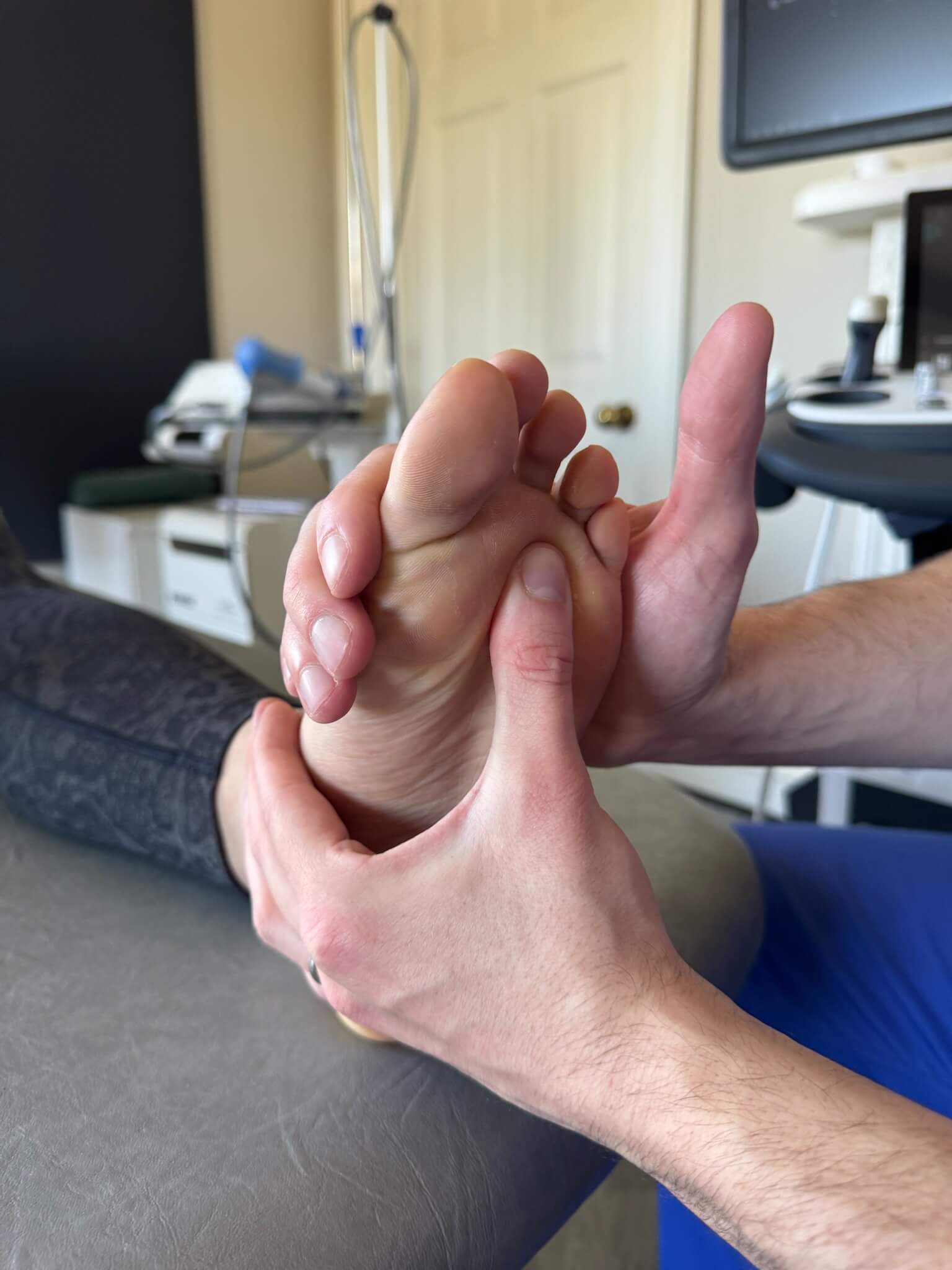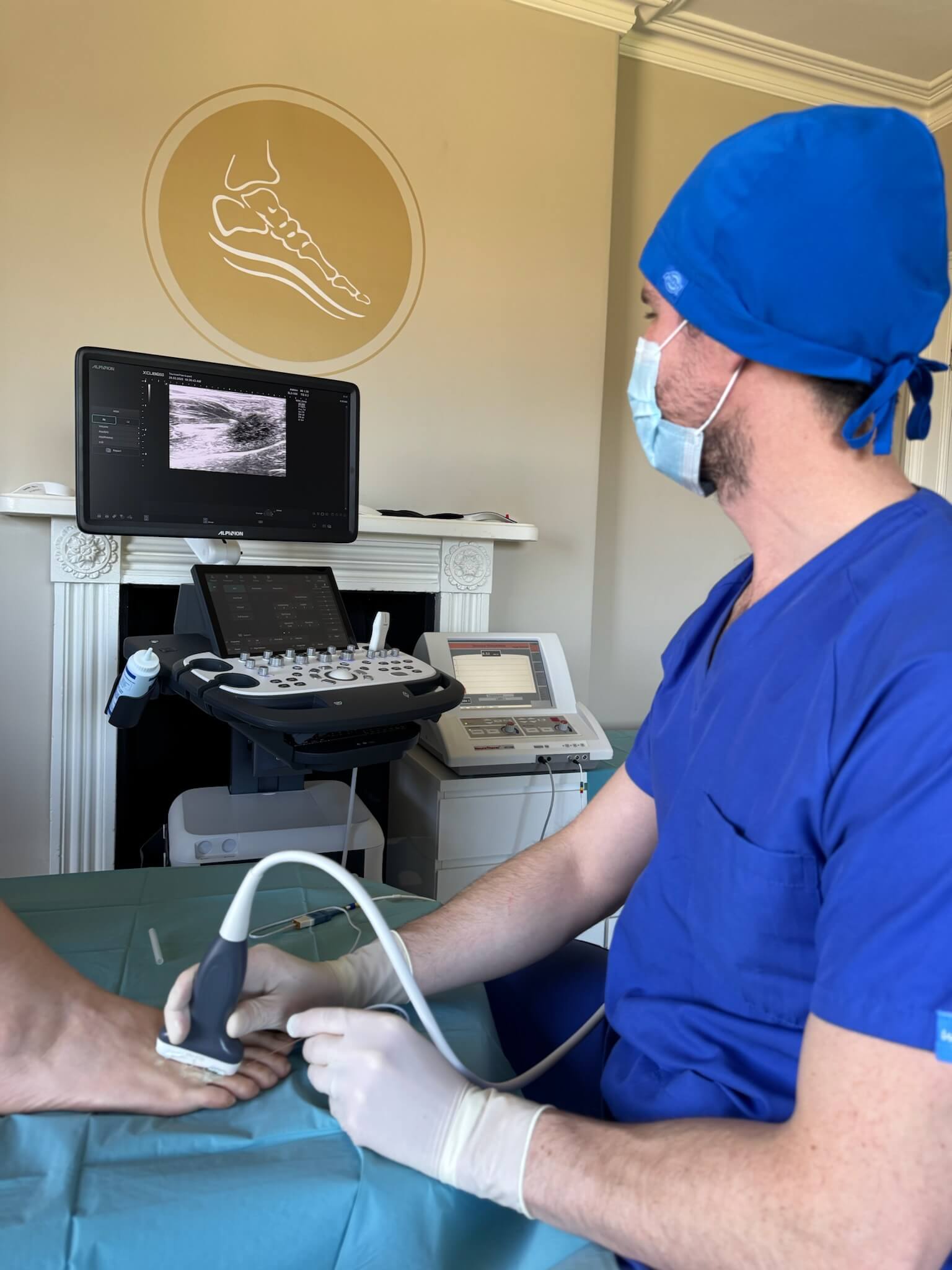Morton's Neuroma
Mortons Neuroma
Morton’s neuroma is one of the most common causes of forefoot pain. Morton’s neuroma is a painful fibrous thickening of one of the nerves that run in between the toes and typically causes radiating pain and numbness in the toes.
The most common site of a Morton’s Neuroma is between the 3rd and 4th toes. It can be diagnosed clinically with a physical examination known as a Mulder’s click test. It can also be diagnosed with diagnostic ultrasound which is what we provide as part of the initial consultation this is particularly useful for differentiating it from other causes of forefoot pain.

Morton’s neuroma treatment options
Radiofrequency nerve ablation
What is radiofrequency nerve ablation?
Radiofrequency nerve ablation is a minimally invasive ultrasound guided procedure that uses high frequency radio waves to heat the neuroma. It is usually performed at a temperature of 90 degrees Celsius. At this temperature the neuroma is denervated and no longer able to transmit pain signals. Radiofrequency nerve ablation is a recognised treatment for various foot conditions and has been used in medicine for many years, mostly for chronic back pain, heart disorders and heel pain. The results of nerve ablation are comparable to open surgery (neurectomy) but come with less risks and faster recovery.
Radiofrequency Nerve Ablation vs Cryosurgery
What is the difference between radiofrequency nerve ablation and cryosurgery?
Both methods involve intentionally damaging nerve fibres within the neuroma to disrupt the transmission of pain signals. Radiofrequency achieves this through heat, while cryosurgery does it with cold. Both procedures are considered minimally invasive, and their techniques and post-operative recovery are quite similar. Although cryosurgery is a viable alternative to radiofrequency ablation, we strongly favour the latter. This preference stems from the robust evidence base supporting radiofrequency nerve ablation’s effectiveness, as demonstrated by extensive published research. Conversely, there’s limited published research on cryosurgery for Morton’s neuroma, making it less established in comparison.
Other treatment options
Corticosteroid injection
Corticosteroid injections are a common treatment for Morton’s neuroma. The aim of a corticosteroid injection is to reduce inflammation, nerve thickening and pain. They are often effective in the short term (< 3 months) but less effective in the longer term for most patients. It is possible to have mutiple corticosteroid injections as and when required to manage the pain however this may increase the risk of unwanted side effects including thinning of the plantar fat pad and lesser toe deformities
Orthotics
Orthotics are special insoles that are added to shoes to reduce pressure on/around the nerve. This helps prevent repetitive irritation of the nerve which reduces pain frequency and intensity. This can make the condition manageable in the long term and allow patients to continue their day to day activities. Sometimes orthotics aren’t effective at reducing pain levels. This can happen if the neuroma is particularly large. In this scenario mosty patients go on to receive other treatment.
Neurectomy
Neurectomy involves surgical removal of the nerve via open surgery. This procedure is recommended when conservative treatments have not worked. The results of neurectomy are generally very good with overall success rates around 80 85%. The main post-op complication of neurectomy surgery is a stump neuroma. This is a painful end of the nerve where the nerve has been cut surgically. The incidence of stump neuroma is approximately 15%.
If you’re suffering from Morton’s neuroma and wonder whether our treatment options might be suitable for you then give us a call to discuss on 01225 983528 or schedule a call via the button below

Testimonials
Why People Love
The Heel Pain Expert